Missoula Wild
Missoula is ringed by 5,000-foot mountains and threaded by the Rattlesnake, Blackfoot, and Clark Fork Rivers, and was called “Menissoulatakoo” by the Salish, which roughly translates to “river of surprise.” And Frank Worden and C. P. Higgins—yes, just like the market and the main street—established a trading post here in 1860. But stroll past the bobbing joggers on the Clark Fork Riverfront trails, edge past basket-bearing shoppers at the Saturday morning farmers’ markets or try to find seat in the hopping James Bar or its country cousin Al & Vics and you’ll soon realize a truth about the place: Missoula is extremely social. It’s no accident the place is a trading post/college town. It’s no accident there’s a festival nearly every weekend. It’s no accident the place is populated by some of the more social species: crows, dogs, and college students.
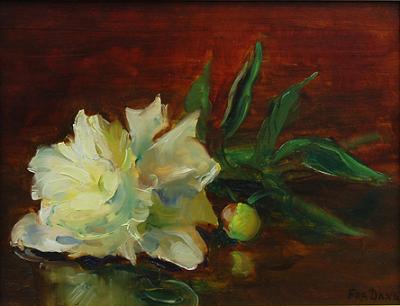
The rivers of sociability run deep in the salons, book clubs, readings, fundraisers, and dinner parties where connections are made and remade. This is nothing new. My great-grandfather, John Edward Patterson, moved here in May 1900, leaving my great-grandmother in Chicago at first. But he needed her in order to get settled. The women in my family joined PTAs, symphony associations, weavers’ guilds, university women associations, and the mysterious P.E.O. My generation joined protests, newspapers, and literary salons. Twenty-seven years ago, after I made the finals table at a riotous poker tournament, my husband-to-be turned to me and said, “I like the way you played your cards. What do you say we get hitched?”
Missoulians are not passive about their entertainments. If it’s not here, they create it. The Carousel, the Children’s Theatre, the Farmer’s Market, Caras Park, the Mount Jumbo Open Space, the North Hills Open Space, Mamalode—all were created, in the beginning, by people who had an idea and set out to make it happen. They were ideas born out of the wild, weird heart of Missoula.
But Missoula’s changing. The image of Missoula I used to love was the beat-up pickup parked at the symphony concert. Now, for me, it is the cowboy walking down 4th street with a yoga mat in his backpack. Or the note I saw on bridge stairwell that said, “Art? Or Art Painted Over?” The truth is, Missoula is too varied to sum up in one image. What we do know is this: we love our place by moving, meditating, and mingling in it, so I have chosen three Missoula ecosystems—the downtown, the university area, and the Rattlesnake— in which to do just that.
Downtown Missoula
Channel Petula Clark
In one of the two “Hallways of History” at Southgate Mall, there is a 1950s Stan Healy black and white photograph of women shopping that captures downtown Missoula for me: on a crowded sidewalk groups of women walk, arm in arm, dressed in hats, suits, gloves, heels, their purses draped over their arms, their faces alive, expectant, their feet stepping forward with great purpose. They’re downtown. The Art Moderne lobby of the restored Florence Hotel, built in 1941, is a great place to feel the present nudge from the past with sangiovese and duck and pear pate from the Red Bird Cafe.

Today’s downtown, with its wide streets and 1890s brick buildings housing bookstores, boutique stores, banks, and yoga centers, still thrives. For sheer energy, I like the riverside Caras Park—former home of drunks and grass-rolling couples—where today kids cavort around the Returnings, the giant fish sculpture by Jeffrey Funk, kayakers thread through the Brennan’s Wave on the Clark Fork River, and there’s Saturday meat market. Literally. It’s the Clark Fork Farmer’s Market, at the opposite end of Higgins from its predecessor, the Missoula Farmer’s Market. The tinny music from the “A Carousel for Missoula” with its 38 hand-carved horses (the 1991 dream child of Chuck Karapich and hundreds of volunteers) and the shouts from the nearby playground Dragon’s Hollow add to the party-like atmosphere.
Or catch a First Friday, when the art mob is out, drifting from gallery to gallery, sipping wine, studying the new canvases. For sheer inspiration, check out the Missoula Art Museum, housed in the former Carnegie library. Or see the latest independent film at the newly refurbished crystal-chandeliered Wilma.
The University Area
Contemporary Art to Chai
With orderly rows of Norway maples, the University area takes up two of Missoula’s 13 historic district designations. One of Missoula’s oldest areas is where my great-grandfather built the Prairie-style home I now live in. Its district is the Maggie Smith of Missoula, grand old dame, charming, a bit caustic, with its Victorian mansions, A. J. Gibson houses, and classic bungalows, endless tug-of-war between residents and college students. It’s full of sweat-shirted teenagers on skateboards, students tramping to and from bars on weekend nights, but on dreamy springs nights, I can still imagine a suitor serenading his beau at her sorority from a horse—as my great-uncle did to my great-aunt.
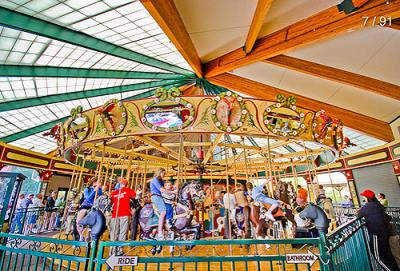
Its centerpiece is, of course, The University of Montana-Missoula, built in 1895 at the foot of Mount Sentinel (hence the “M”) with its A. J. Gibson clock tower, elegant brick campus scoured by winds from Hellgate Canyon. It is a place we depend on to keep us fired up—with its steady stream of lectures, classes, and readings. Check out the Meloy and Paxson galleries of the Montana Museum of Art and Culture where classical meets contemporary art.
Refuel on chai and chicken curry wraps at the Buttercup Market & Cafe, a new cafe and grocery featuring organic Montana produce, meats, and wine. Then walk it off on the 2.5-mile Kim Williams Trail, shadowed by osprey and named for the public radio naturalist, that winds along the 134-acre wild area bordering Mount Sentinel along the former tracks of the Milwaukee Railroad.
The Rattlesnake
Minutes from the Madding Crowd
The Rattlesnake is the place to get away. Originally a separate town named Company Town and Woody Addition for the workers at Missoula Mills in the late 19th century, the area still has a separate less-hurried feel than town with its tall Ponderosas, deep shadowed streets, and cooler temperatures. Bears, each fall, travel down the Rattlesnake Creek, ignoring fences as they feast from fruit tree to fruit tree. Blossom’s Bed and Breakfast, a four-room Craftsman-style bungalow nestled at the foot of Mount Jumbo, is a charming place to stay.
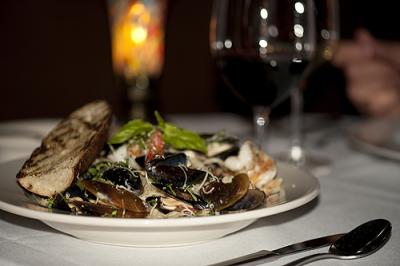
At the top is wilderness, the 34,000-acre Rattlesnake Wilderness Area, where you can hike for an afternoon or backpack to the 7,960-foot Stuart Peak. My favorite? The newer 1.8-mile Ridge Trial of North Hills Trail system, informally known as Peace Sign Hill (the peace sign is now gone, but a peace sign is outlined in rock in its place). Here the round humps of the mountains look like crouching animals and the cityscape spreads out, long and lean, from its roots—the river and the railroad—and you can count the five valleys that gave the place its nickname: Hub of Five Valleys.
Spring twilights in the Rattlesnake are long, cool and best spent at Ten Spoons Winery, built in 1997 with a smashing view of Mount Jumbo. (Tasting room open Thurs.-Sat., 5 to 9). Celebrate a spring evening listening to jazz, sipping a Moonlight Pinot Noir on the porch as the sun leaves the grape arbor, the Rattlesnake Valley, and, finally, the evening sky. Ahh, Missoula.
Travel Guide
- For a self-guided Missoula walking tour of the downtown, sponsored by the Missoula Downtown Association, view www.missouladowntown.com/play/historic-walking-tour
- For the art scene and local watering holes, see www.firstfridaysmissoula.blogspot.com
- For an excellent list of Missoula trails and current events, see www.destinationmissoula.org
- For area cultural events, try the Missoula Cultural Council, www.missoulacultural.org
- For a listing of University events, try http://events.umt.edu/
- For tourism information from the Missoula Chamber of Commerce: www.missoulachamber.com









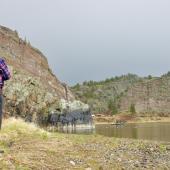
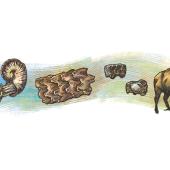

Leave a Comment Here